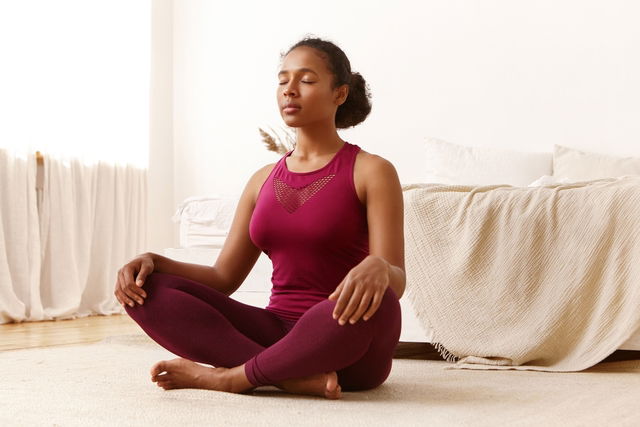Meditation is a technique that allows your to take your mind to a calm and relaxing state through posture and focusing your attention.
Meditation can help you to reach inner peace and tranquility and can offer many health benefits, such as improvements in stress, anxiety and sleep, as well as focus and productivity at work or school.
Although it is often practiced in classes and specific studios with an instructor, you can also meditate at home or at work, To learn to meditate on your own, you should practice meditation techniques every day for 5 to 20 minutes, once or twice a day.

Meditation benefits
Meditating every day can help you to better control your thoughts and focus. It can also offer benefits such as:
- Aiding in the treatment of depression and preventing flare-ups
- Controlling stress and anxiety
- Decreasing insomnia
- Improving focus and mental performance at work or school
- Helping to control high blood pressure
- Better management of sugar levels in diabetes
- Helping to treat eating disorders and compulsive disorders
Meditation comes from ancient traditional origins but it totally applicable to your day-to-day routine. It can improve your wellbeing and quality of life.
How to start meditating
To start meditating, you can follow these steps:
1. Block off 5 to 10 minutes per day
Set aside 1 or 2 moments in your day to temporarily “turn-off”. You can meditate once you wake-up (to start your day with less anxiety and more focus), in the middle of the day (to take a break from your activities of daily living), or before going to bed, to slow-down your mind before falling asleep.
Ideally, 5 to 10 minutes are sufficient for achieving all benefits of meditation.
2. Choose a calm space
You should choose a meditating space that you can sit and be calm, like a room, garden, or sofa. You can even sit in your office chair or in the car, after parking and before heading into work.
It is important to choose a space with minimal distractions so you can concentration more easily.
3. Get in a comfortable position
According to oriental traditions, the ideal position for meditation is in the lotus position, with your back straight, legs crossed and your feet resting on your thighs above your knees. However this position is not mandatory, and you can meditate in any sitting or lying position. As long as you are comfortable, ensure your your back is straight, your shoulders relaxed and your neck in-line.
You can also support your hands by resting them in your lap or by placing one on each knee, palms facing up. Once you are comfortable, close your eyes and allow your muscles to relax.
4. Controlling your breathing
It is important to learn how to pay attention to your breathing and to use your lungs to their full capacity. To breathe deeply, pull the air into your belly and thorax. Then exhale slowly and calmly.
Controlling your breathing may not be easy at first, but it should be comfortable and unforced. This exercise can be done by counting to 4 to inhale, another 4 to exhale.
5. Focusing your attention
In traditional meditation, it is necessary to find a focus object to keep your attention on throughout your meditation. Generally, mantras are used, and they can be just a sound, syllable, word or phrase that is repeated over and over in the head to help you concentrate.
You can also use other types of focus objects, like an image, melody, the breeze on your skin your own breathing, or a positive thought. The goal is to keep your mind calm and free of other thoughts.
It is very common to experience other thoughts during meditation. It is important not to fight them, but instead allow them to enter your mind and exit. With time and practice, it will be easier to concentrate and prevent intrusive thoughts.
